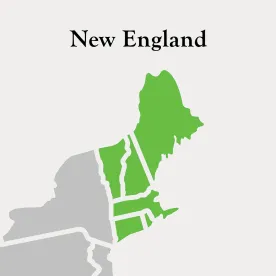The Standells may “love that dirty water” according to their 1966 hit song, but the Environmental Protection Agency’s (EPA) New England region is hoping to reduce stormwater pollution running off industrial, commercial and institutional properties “down by the banks of the river Charles” and throughout three Boston area watersheds. After prodding from the Conservation Law Foundation, EPA Region 1 is taking steps to expand the agency’s stormwater permitting program to apply to operators of those designated parcels in the Charles River, Neponset River, and Mystic River watersheds if they have one acre or more of impervious surfaces preventing water from infiltrating into the ground. These surfaces can include not only buildings and pavement, but also compacted gravel and artificial turf.
On September 14, 2022, EPA Region I announced its plans to propose one or more general permits as part of the Clean Water Act’s (CWA) National Pollutant Discharge Elimination System (NPDES). The agency described its initiative as the first exercise of its CWA “residual designation authority … on such a broad scale to address watersheds in a major urban area.” The EPA’s related determination was supported by an extensive history of water quality standard violations and significant pollutant contributions from these stormwaters, the Massachusetts Department of Environmental Protection’s prior listing of “impaired waters” in these watersheds under CWA § 303(d), and allocations made in related Total Maximum Daily Loads (TMDLs) for nitrogen, phosphorus, bacteria, and other stormwater pollutants. In addition to documenting these grounds for using its CWA “residual designation authority,” the agency pointed to other factors warranting prompt action, including the extent of stormwater pollution flowing into “environmental justice” communities and the rise of stormwater-related climate change impacts such as year-round algae blooms.
The EPA stated its NPDES permit proposal “will likely rely on well-proven and easily implemented ’Best Management Practices’ (BMPs) – including leaf litter pickup, parking lot sweeping, installing rain gardens or other infiltration practices, planting trees, reducing pavement or utilizing pervious pavement.” Previously issued NPDES general permits have also required stormwater sampling and implementation of control measures when applicable standards are exceeded. The expected permit would not apply to operators already authorized to discharge stormwater under an EPA general or individual permit. For example, storm sewer systems operated in these watersheds by the City of Boston and other municipalities are not designated by the agency for the new stormwater requirements.
The EPA has not released its schedule for rolling out this new stormwater program, stating only that it plans to post its general permit proposal on its website and open up a public comment period for both the permit proposal and the EPA’s designation under the Clean Water Act.



 />i
/>i